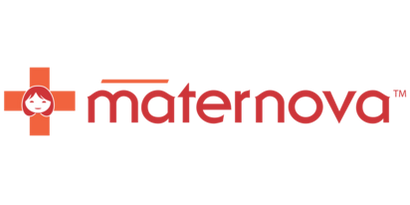Add description, images, menus and links to your mega menu
A column with no settings can be used as a spacer
Link to your collections, sales and even external links
Add up to five columns
Add description, images, menus and links to your mega menu
A column with no settings can be used as a spacer
Link to your collections, sales and even external links
Add up to five columns
Un 'ChARM' tecnológico para ayudar a diagnosticar la neumonía en la comunidad
marzo 30, 2025 2 lectura mínima
ChARM es un dispositivo inteligente con más de una década de historia a sus espaldas: como ocurre con muchas innovaciones sanitarias mundiales, una inspiración original tarda años en hacerse realidad.
En 2014, un llamamiento de UNICEF articuló los criterios para un monitor automatizado de frecuencia respiratoria que permitiera a los trabajadores sanitarios comunitarios contar fácilmente la frecuencia respiratoria.
Así es como UNICEF describió el problema: “ …contar las respiraciones en niños es difícil. La frecuencia respiratoria (FR) puede variar según el entorno y la técnica empleada por quien realiza el conteo, lo que da lugar a errores humanos que a menudo conducen a diagnósticos erróneos. Además, no existe una definición fija de respiración, lo que significa que no es posible validar cuándo una respiración se ha contado correctamente. En muchos casos, simplemente no se realiza el conteo”.
Se presentaron dos innovaciones clave como resultado de la convocatoria de UNICEF, o "perfil de producto objetivo". Uno de los dispositivos fue el ChARM, desarrollado por Philips con la colaboración de Save the Children. Tras todas las pruebas, el dispositivo se mejoró aún más y ahora lo fabrica una nueva empresa llamada ChARM International.
El ChARM utiliza un acelerómetro para medir las aceleraciones y desaceleraciones del tórax (frecuencia respiratoria). El dispositivo está calibrado para tres grupos de edad diferentes (0-2 meses, 2-12 meses y 12 meses a cinco años). El ChARM se coloca alrededor del pecho del niño. Un promotor de salud comunitario aprende a elegir el grupo de edad adecuado para el niño. Con solo presionar un botón en el lateral del dispositivo, se inicia la medición.
Se han realizado múltiples estudios para evaluar la precisión y usabilidad del ChARM.
En Nepal, la mayoría de los trabajadores de la salud, en todas las regiones, prefirieron el ChARM a los dispositivos “temporizadores” utilizados anteriormente.

En Etiopía, se entrevistó a trabajadores de extensión sanitaria después de un estudio formal: ellos observaron que el uso de ChARM atraía más visitas de salud infantil de la comunidad.
En un segundo estudio etíope, se analizó específicamente la usabilidad del ChARM en relación con la capacidad de seguir las instrucciones de uso del fabricante y la adherencia a la evaluación de respiración rápida exigida por la Organización Mundial de la Salud. En este estudio, después de dos meses, los profesionales sanitarios aumentaron la adherencia al 74,6 %, un aumento del 18 % en comparación con el valor inicial de dos meses antes.
Quizás un profesional de la salud resumió mejor los resultados de usabilidad: «Antes de ChARM, contábamos los RR manualmente. Ahora, ChARM nos muestra el resultado y la clasificación… Facilita las cosas. No veo barreras y la comunidad está dispuesta». Esther, Centro de Salud de Goyda, Etiopía.
Dejar un comentario
Los comentarios se aprobarán antes de mostrarse.
Ver artículo completo
Pumani bubble CPAP
noviembre 11, 2025 1 lectura mínima
The Pumani bubble CPAP was engineered by a team at Rice University in Texas, working in collaboration with clinicians in Malawi. A range of specific design considerations made the Pumani especially appropriate for low-resource settings so that parts are easy to replace.
The MaternaWell Tray for PPH estimation now appears in key obstetric guidelines
octubre 30, 2025 1 lectura mínima
A 'tray' is now mentioned in the FIGO/WHO/ICM Consolidated Postpartum Hemorrhage Guidelines published by in 2025, expanding the type of monitoring device from drape to drape or tray.
Is it ethical to separate mother and infant just after birth?
octubre 28, 2025 2 lectura mínima
Immediate skin to skin care means less than ten minutes after the infant takes its first breath, the infant, naked except for a diaper, spends at least one hour on the mother’s chest, against her skin. It is recommended that preterm and low birth weight kangaroo care involve prolonging contact beyond the first hour for at least 8 hours per day or as long as possible (up to 24 hours) per day

